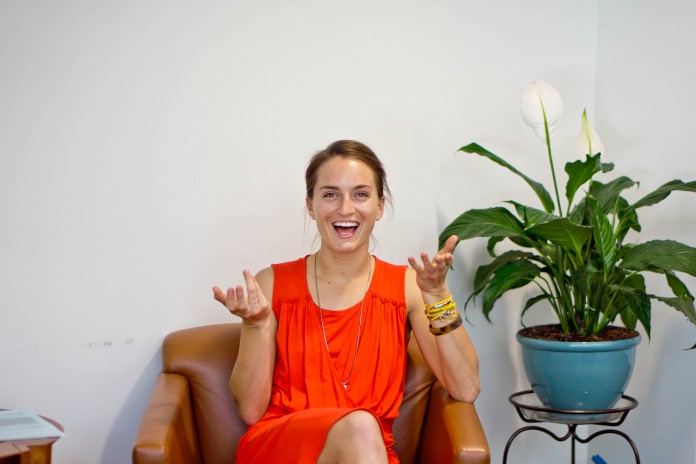Taylor Griffith
Staff Writer
Photo by John Clow
Q: How did you become interested in autism research?
A: I worked with adults with autism in high school, and I had that interest because my mom worked with adults with intellectual and physical disabilities. It was a group home for adults with autism and it was really an amazing experience. I worked with a man who was around 60 years old who was deaf and mute, so we used sign language and worked on basic skills. It got to the point where he would get excited to see me, and seeing him smile and go through changes was really rewarding. I started my undergrad in psychology and didn’t have too much autism experience, but I worked in a developmental lab which was important because knowing about typical development is really important for seeing atypical development. Then I worked at Yale, in the neuroimaging lab, with kids with autism, and that’s where I got most of my experience.
Q: What is your specific area of interest in autism research?
A: I have two areas of interest: treatment and therapy, and being able to better understand treatment—which is where fMRI comes in. Why do some treatments work and why do others not work, and knowing more about Pivotal Response Treatment is what I am looking at with the grant—how it works and if it works differently for different people. It will really help us to better fit a child with a treatment and make faster progress. I am also really interested in early intervention because I think it is really important that we are able to intervene early and change the way kids are processing social stimuli.
Q: Why did you choose to pursue graduate studies at UCSB’s Koegel Autism Center?
A: This is where PRT started. I was exposed to PRT back at Yale and I really liked it because it is a behavior study, but it is one that is less restrictive than some other behavioral treatments for autism—it is based on child choice. It’s fun using play opportunities to help them work on different skills! That is important if you are working with young kids because these kids with autism already feel really different than everyone around them. They enjoy it and we have a good time. That “fun” aspect is so valuable when you are working with young kids with ASD. Intervention should not feel like more work for them. The fact that I saw amazing changes in the kids I worked with there really made me want to keep using PRT, so coming here where PRT started made sense for me.
Q: How will the Dennis Weatherstone Pre-Doctoral Fellowship [awarded by Autism Speaks, the nation’s largest organization dedicated to funding and facilitating autism research] allow you to achieve your goals?
A: It is letting me continue the study from Yale, except we are now doing wait-list control, which is really exciting because it is important to make sure that the changes we are seeing are due to the treatment. One of the studies I did at Yale used one of the paradigms in our neural mechanisms paper and looked at the way that kids with autism and their unaffected siblings process the same social stimuli set, and the coolest thing for me was the unaffected siblings had been ruled out for broader autism phenotypes. So, behaviorally they looked exactly the same as their typically developing peers, but their brain was doing something different. In some ways, they looked more similar to their siblings. That was first time where I was like: “Whoa, this is so cool!” There’s this whole other level that we can learn about using fMRI.
Q: What do you foresee in the future of autism research and how will your specific research contribute?
A: I was just at the International Meeting for Autism Research in Spain and a lot of it now is looking at genetics and starting to use these different modalities—so starting to use eye-tracking and fMRI to look at a disorder that is defined behaviorally. There have been some really cool research studies using eye tracking—so eye-gaze patterns—to predict future diagnoses of autism in high-risk infants. That type of research and the research I will be doing with this grant is helpful in moving the field forward from only thinking of autism as a behaviorally defined disorder—this is going to help us learn about the underlying mechanisms of autism. We still know so little about what causes autism so taking these different perspectives and using multiple modalities like this is going to help push the field forward and hopefully gain some more insight into some of the causes.











